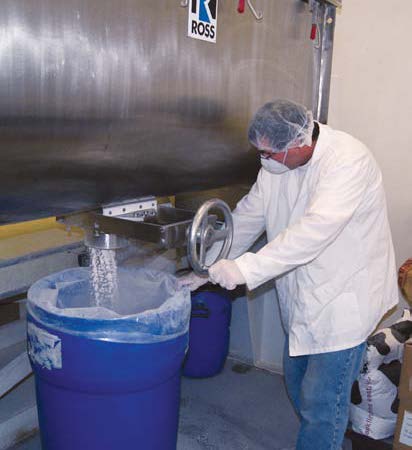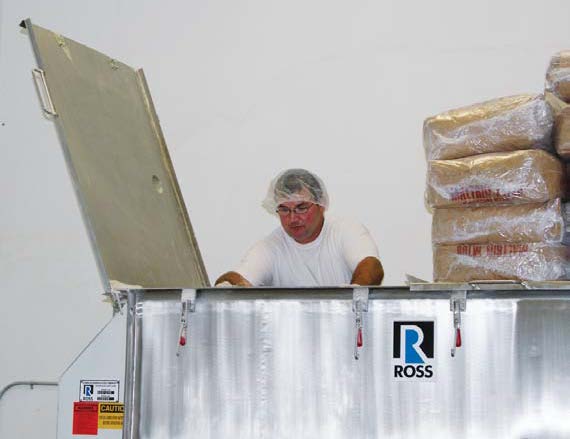Tech Report
Electronic variable speed promotes processing flexibility in ribbon blenders - from soft start to discharge.

Technology Brief
Variable frequency drives enable `soft start` of ribbon blenders, an essential feature that protects the system against a spike in start-up torque. The ability to moderate energy input during the blending cycle to accommodate a variety of ingredients and recipes is another key benefit of variable speed. Finally, ribbon blenders equipped with variable frequency drives also deliver greater flexibility and speed in the discharge process.
`Soft starting` protects blending equipment
Over the years, many ribbon blenders were built without any provision for starting at slow speed. Unfortunately, a dead load start presents many disadvantages, all of which increase costs. The buyer must choose between using an over-sized drive train that is capable of delivering the peak horsepower needed to get the batch moving or a lower torque drive train that is appropriate for powering the blender once it is running but overloaded when starting. The first choice is wasteful, since the larger motor is a glutton for power and its initial purchase price is high. The second choice is risky, since the high torque at start-up over-stresses the system and eventually causes maintenance problems.
Newer generation blenders are equipped with electronic variable frequency drives that can be programmed to allow a slow start under full load and protect the system against a spike in start-up torque. Electronic soft starters are also available but these allow only single speed operation during the blending cycle itself.
Flexibility in energy input
Variable speed in ribbon blenders is essential because it enables the operator to fine-tune shear energy during different stages of the blending operation. It is also a useful feature when processing various formulations on the same blender. For example, it allows the agitator to run at slow or moderate speeds to protect fragile materials while on another batch it can run at full speed for quick blending of more hardy ingredients.
Fast, operator-friendly discharge
Running the ribbon agitator during discharge helps move product towards the valve. The discharge operation can often be completed faster compared to processes that rely on gravity alone. Materials that need more assistance in discharging benefit from running the agitator at higher speeds, while more free-flowing or lightweight powders will require only gentle agitation to move quickly but with minimal dusting. Along with varying blender speed, the operator can also manipulate the valve opening to speed up or slow down the flow of materials being discharged. This level of control over the discharge rate is especially important when different recipes need to be discharged into a variety of packaging and filling equipment.
How ribbon blenders work

Ribbon blenders consist of a U-shaped horizontal trough and an agitator made up of inner and outer helical ribbons that are pitched to move material axially, in opposing directions, and also radially. This combination promotes fast and thorough blending. Tip speeds in the range of 300 feet/min are typical.
Ribbon Blender Installation Snapshot

A manufacturer of powdered beverage mixes reported a 76% acceleration in their blending process and a significant improvement in product discharge and changeover when they moved their operations from a V-cone tumble blender into a Ross ribbon blender. The changeover procedure was cut from 25 minutes to 10 as their variable speed ribbon blender provides them better control in handling a variety of products - from granular materials like malto-dextrin, fast-flowing powders like fructose crystals, and even reluctant materials like soy and whey that need encouragement to move quickly through the discharge valve.